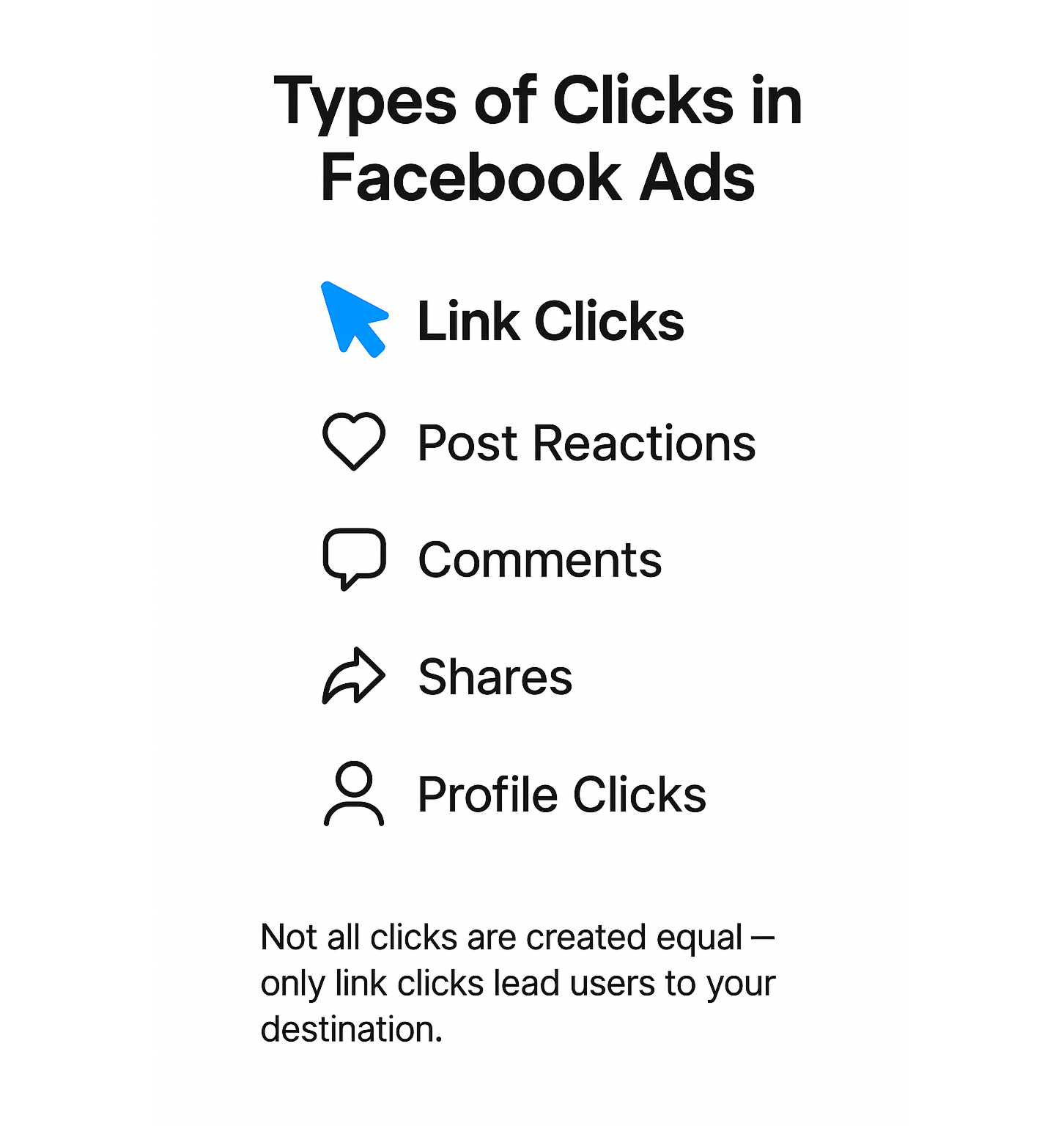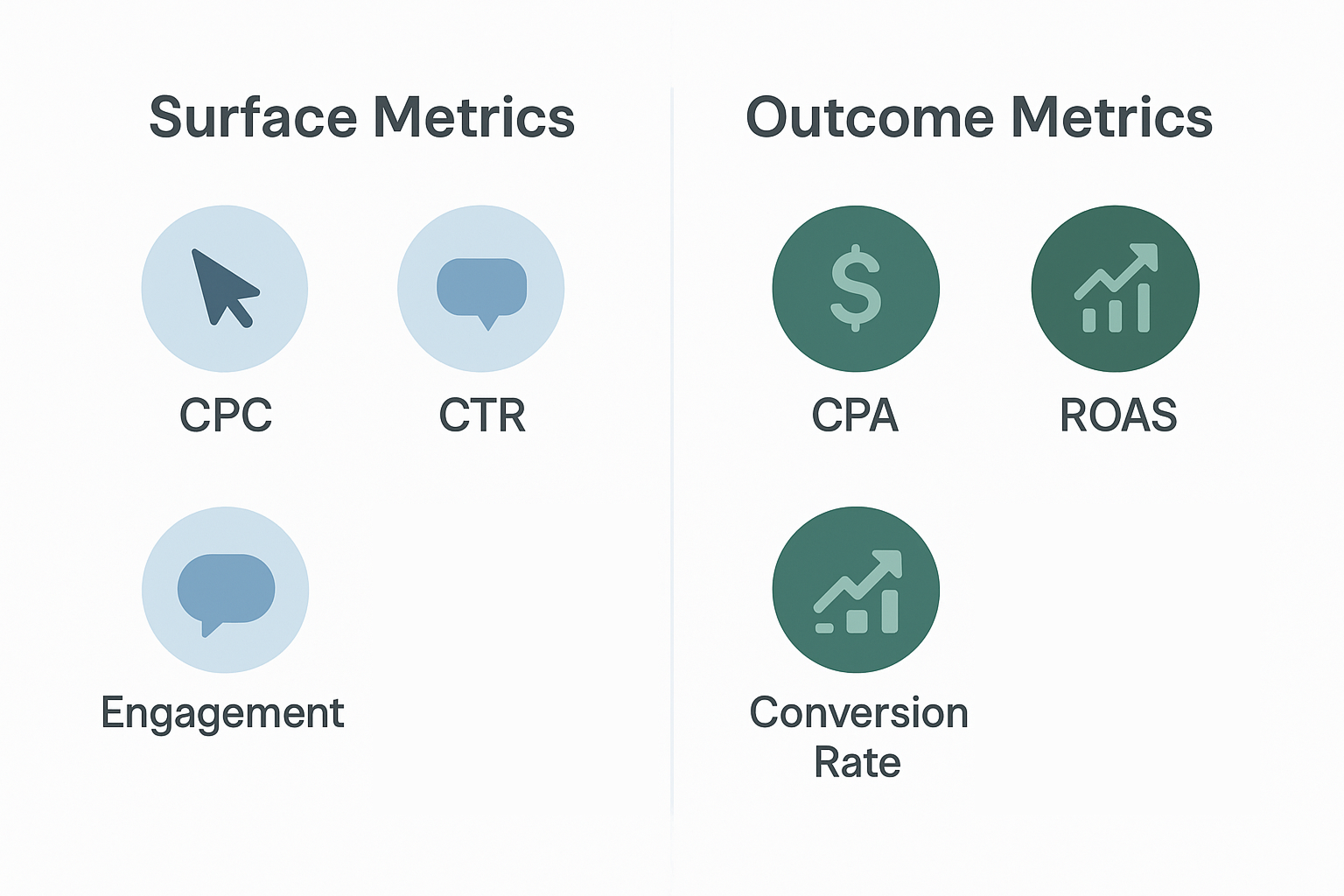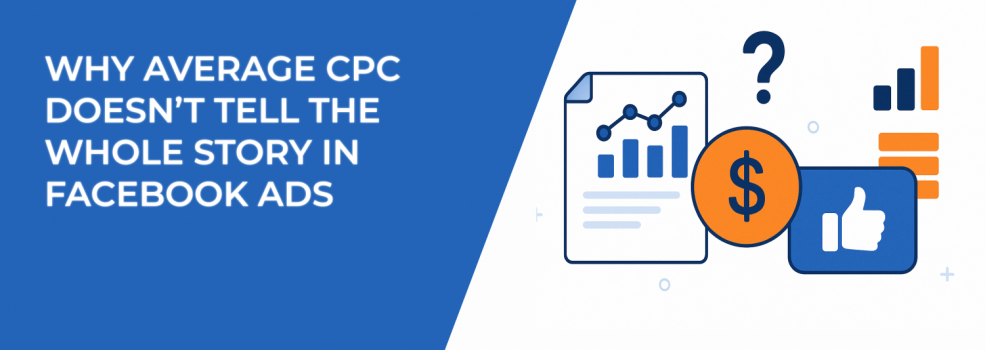When running Facebook Ads, cost per click (CPC) is often the first metric marketers check. It’s easy to understand, quick to report, and feels like a straightforward way to measure efficiency. But if you're using CPC as your main guide, there's a good chance you're not seeing the full picture.
A low CPC may seem like a win, but if it’s not leading to actual results — sales, leads, or meaningful actions — you’re simply spending less to get nowhere faster.
Let’s break down why CPC isn’t enough, when it can be misleading, and which metrics you should prioritize instead.
What CPC Actually Measures — and Why It’s Not Enough
CPC shows how much you’re paying, on average, for each click your ad receives. But not all clicks are the same.

In Facebook Ads, a “click” can include:
-
A link click to your website,
-
A click to expand an image or caption,
-
A reaction (like, love, etc.),
-
A comment or share,
-
A click to view your Facebook Page.
Only some of these clicks indicate genuine interest in your offer or business. You could be paying for passive engagement — not qualified traffic.
If your campaign looks great on paper with a low CPC but you're not getting results, you’re not alone. This often signals a disconnect between click quality and actual conversion behavior. For help diagnosing that issue, see: What to Do When Your CPC Is Low But Conversions Are Flat.
Why Low CPC Can Be Misleading
Picture this: your ad gets tons of reactions and comments. Your CPC drops to $0.22. You assume it’s working.
But then you check the rest of the data:
-
Landing page views are low.
-
Time on site is under 5 seconds.
-
Bounce rate is over 80 percent.
-
No purchases or form submissions occur.
The issue? You're paying for clicks that don't convert. A low CPC can often mean your ad is engaging in the wrong way — people may be curious or entertained, but not compelled to act.
To identify the real problem and improve performance, start here: Facebook Ads Not Converting: How To Fix It.
What to Track Instead of CPC
If you want real insight into your campaign performance, look beyond CPC.

Here are five metrics that give you a clearer view of what’s actually working:
1. Link Click-Through Rate (CTR)
This tells you how many users clicked through to your destination, such as a website or product page. It excludes other types of clicks (e.g., reactions or profile views). A strong link CTR usually reflects more intentional interest.
If overall CTR is high but link CTR is low, your ad may be engaging — but not relevant or persuasive enough to get real action.
2. Cost Per Result (CPA)
Unlike CPC, cost per result focuses on what really matters: how much you’re spending for each desired outcome, such as a lead, sale, or form submission. This is a true indicator of campaign efficiency.
A higher CPC with a lower CPA is almost always better than the reverse.
3. Conversion Rate
This metric tells you how many people completed your desired action after clicking. If clicks don’t convert, there may be a problem with your landing page, ad-message match, or audience targeting.
4. On-Site Behavior Metrics
Look at bounce rate, average session duration, and scroll depth using Google Analytics or another tool. These indicators tell you if your traffic is engaging — or leaving right away.
Even if your ads are driving traffic, poor on-site engagement often means that you’re targeting the wrong people or your landing page needs improvement.
5. Return on Ad Spend (ROAS)
ROAS is the ultimate performance metric. It tells you how much revenue you're generating for every dollar spent. Even if CPC is higher, a strong ROAS means your ad is profitable and scalable.
Want a deeper dive into ROAS and other high-value indicators? Read: Which Facebook Ad Metrics Predict Profitability Best.
How to Analyze Facebook Ads Performance Holistically
When you evaluate your campaigns, look beyond cost and ask:
-
Are the right users clicking, or just anyone?
-
Do users stay on your site, or bounce instantly?
-
Are they completing meaningful actions — or just scrolling?
-
Is your offer clearly aligned with the intent you're targeting?
Once you start asking these questions, your view of performance will shift. You'll focus less on “cheap clicks” and more on qualified engagement that leads to conversions.
For a full breakdown of how to analyze campaigns like a pro, see: How to Analyze Facebook Ad Performance Beyond CTR and CPC.
Does CPC Still Matter?
Yes — but only in context. CPC is useful for:
-
Comparing creatives during A/B tests,
-
Evaluating the efficiency of awareness campaigns,
-
Monitoring early signs of ad fatigue or low relevance,
-
Optimizing for traffic campaigns, where clicks are the goal.
But never use CPC as a sole indicator of campaign success. It needs to be paired with behavioral and outcome-based metrics to truly reflect performance.
Learn which metrics to prioritize and how they work together: The 5 Ad Metrics That Actually Matter When Optimizing Campaigns.
The Bottom Line
CPC may be the first metric you see in your ad dashboard, but it should never be the last one you look at. A low CPC can’t tell you if your ads are actually:
-
Reaching the right audience,
-
Driving qualified traffic,
-
Encouraging meaningful action,
-
Generating revenue.
Focus instead on the bigger picture. Use CPC as a signal, not a scoreboard. Dig into link CTR, CPA, ROAS, and landing page behavior to understand what’s really working.
Because cheap clicks don’t build businesses — real results do.

